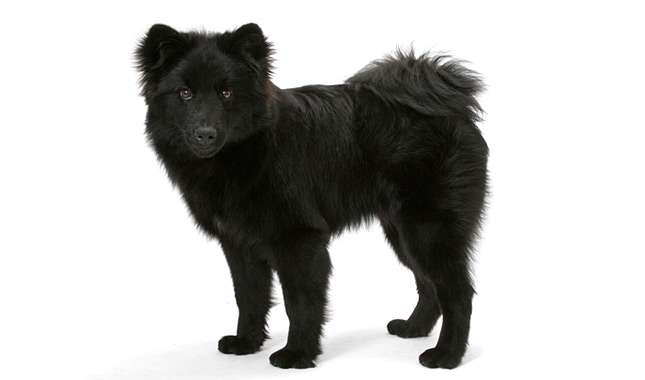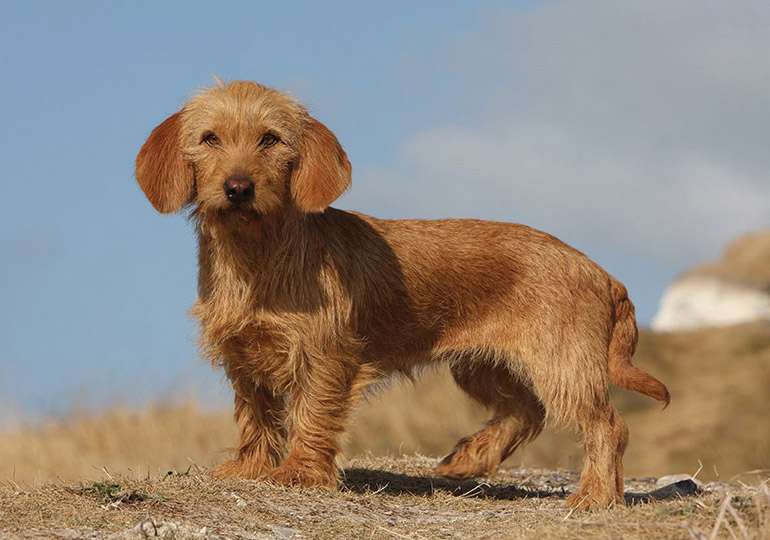
Description
The Swedish Lapphund is a classic Spitz breed, rectangular in shape, somewhat smaller than medium in size, and with a lofty head carriage. The forehead should be rounded, the occiput not clearly defined, and the skull should be somewhat longer than broad. They ought to have a clearly defined stop. The nose should match the coat in colour, be very dark, or be charcoal black. With a scissor bite and evenly spaced, fully formed teeth, the lips and palette should be heavily pigmented. Set far apart, nearly horizontal, round, and moderately large but not projecting, eyes should be brown, preferably a dark brown, and expressive. Triangular, small, pricked, slightly rounded, widely spaced, and very movable are the characteristics of the ear.
The tail is rather high set, extending to the hock joint. When the dog is moving, carried with the back curled over. Light and springy gait that covers terrain in tandem with driving is ideal. Dew claws on the back are accepted. They should have good muscle definition without being overly angular. In order to provide propulsive power, the hock joint should be low placed. Small markings are permitted on the chest, foot, and tail tip in addition to the double coat, which should be thick and weatherproof and come in black and bear-brown.
History/Origin
The Sapmi region, which includes northern Sweden, Norway, Finland, and a tiny portion of Russia and is home to the nomadic Sámi people, is where the Swedish Lapphund first appeared thousands of years ago. Initially employed for hunting, they later developed into herding and guard dogs as the domestication of reindeer increased. They were the first breed to ever be approved by the Swedish Kennel Club, which happened in 1893. They split off from other Sámi herding dogs at the same period, and those dogs eventually split again to become the Finnish Lapphund and Lapponian herder. The first litter of Swedish Lapphunds would not be born in the United States until 2015, and the breed would not reach North America until 2004.
Temperament
Lively, alert kind, and affectionate. The Swedish Lapphund is a highly receptive, focused, and eager worker. It was extremely helpful in the reindeer trade because of its prowess as a good herding dog. It is very adaptable and appropriate for tracking, herding, agility, obedience training, etc. It is tough, full of stamina, and simple to train. Swedish Lapphunds make excellent family dogs and get along well with other dogs, cats, small animals, livestock, young children, and the elderly in the home. They sometimes react poorly to severe corrections because they are sensitive to them. The show ring will disqualify aggressive and excessively shy dogs, and they shouldn’t be bred.

Care as a Pet
Exercise Needs
The Swedish Lapphund requires at least one hour of daily dog activity and ideally more. Additionally, they will require training and puzzle-solving time to keep their sharp minds engaged. A bored, inactive Lapphund won’t make a good friend or a tranquil companion. Even in the harshest weather, the Lapphund needs exercise since it thrives in the cold and is not deterred by a little rain. Exercise your dog early in the day and late at night throughout the summer to prevent heat stroke.
Nutrition and Feeding
The Swedish Lapphund requires a consistent supply of fresh water as well as a balanced dog meal that includes all of the major nutrient categories. Additionally, it’s critical to regularly assess your dog’s bodily condition and to remember to feed them at least twice daily and in accordance with the feeding instructions for the brand of food they are eating.
Grooming
The Swedish Lapphund’s weather-resistant coat is made up of a thick undercoat and a top coat that protrudes straight from the body. On the legs, tail, breast, and “mane,” the coat is longer. To avoid tangles and mats from forming, a thorough groom is essential a few times a week, combing through the undercoat. Take into account whether shedding will be a problem, as the Lapphund can shed extensively twice a year in addition to regular shedding (particularly in a warm home).
Training
To get the most out of the Swedish Lapphund, you’ll need to be on top of your canine training game because this dog is independent-minded and quick-witted. The Lapphund may be trained to a high level using positive reinforcement, food, and toys, and they will like activities like mantrailing, Rally, and scent-work related games. As this is a breed that likes to chase and hunt, pay close attention to early dog socialization and teaching a strong and dependable recall.
Table





